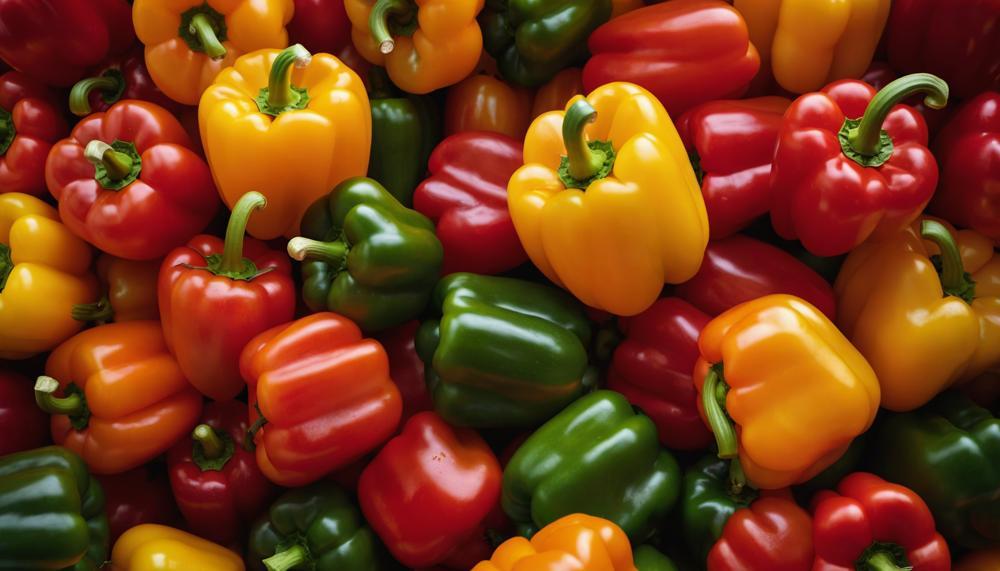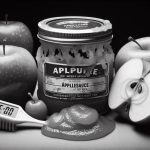Storing cut bell peppers properly in the fridge can make a big difference in maintaining their crispness and flavor.
Whether you’re prepping ingredients for the week or have some leftover from a recipe, knowing the right way to store them is key to avoiding waste and enjoying fresh produce. Here’s the scoop:
Store cut bell peppers like a pro:
- Use an airtight container or a sealed plastic bag to keep them fresh.
- For a quick alternative, place them in a bowl and cover tightly with plastic wrap.
- Always store them in the crisper or produce drawer of the refrigerator.
- Ensure your fridge is set at 40°F (4°C) or below.
- Consume the peppers within a few days for the best quality.
By following these simple tips, your cut bell peppers will stay crunchy and delicious for your next meal. This method isn’t just for peppers; it works great for other veggies like carrots, celery, and lettuce too.
Choosing Your Peppers
When choosing bell peppers to ensure they stay fresh in the fridge after being cut, consider the following factors:
Selection:
- Firmness: Pick firm, smooth-skinned peppers without any wrinkles or blemishes.
- Colour: Vibrant colours indicate freshness; avoid peppers with black spots or shrivelling.

Storage Before Cutting:
- Room Temperature: Store whole peppers at room temperature in a dark, dry place if they will be used soon.
- Refrigeration: For longer storage before cutting, keep whole peppers in the fridge.
Cutting and Storing:
- Preparation: Rinse and dry peppers thoroughly before cutting.
- Storage Method:
- Use an airtight container or a sealed plastic bag.
- Alternatively, place slices in a bowl covered tightly with plastic wrap.
- Fridge Placement: Store in the crisper or produce drawer, away from raw meat or cooked foods.
Refrigeration Conditions:
- Temperature: Ensure the fridge is set at 40°F (4°C) or below.
- Duration: Consume cut peppers within a few days to maintain freshness.
Freezing for Long-term Storage:
- Preparation: Remove peppers from produce bag, rinse, dry, and cut as desired.
- Freezing: Store in a freezer-safe bag or container for extended freshness.
Preparing the Peppers
Washing and cutting bell peppers correctly is essential for maintaining their freshness and safety. Here’s a detailed guide:
Hand Washing
Before handling the bell peppers, wash your hands thoroughly with hot, soapy water for at least 20 seconds to prevent contamination.
Pepper Cleaning:
- Rinse the Peppers: Rinse the bell peppers under cool, running water.
- Dry Thoroughly: Use a paper towel or a clean cloth to dry the peppers, removing any remaining bacteria and reducing spoilage risk.
Cutting Preparation:
- Use Clean Tools: Ensure your cutting board and knife are clean and sanitized, avoiding any tools that have been in contact with raw meat or dirty produce.
Cutting the Peppers:
- Remove the Stem: Cut around the stem and pull it out.
- Halve the Pepper: Cut the pepper in half lengthwise.
- Remove Seeds and Membranes: Use your hands or a knife to remove the seeds and white membranes.
- Slice as Desired: Cut the pepper halves into strips, dice, or slices as needed.
Storing the Peppers:
- Use Airtight Containers: Place the cut peppers in an airtight container, sealed plastic bag, or a tightly wrapped bowl to maintain freshness.
- Fridge Placement: Store the container in the refrigerator’s crisper drawer, keeping it away from raw meat or cooked food.
Fridge Settings and Consumption:
- Temperature: Ensure your fridge temperature is set to 40°F (4°C) or below.
- Consumption: Consume the peppers within a few days after slicing them for optimal freshness.
This method not only keeps your bell peppers fresh and safe but also applies to other vegetables like carrots, celery, and lettuce.
Storing Bell Peppers
The short answer is to store cut bell peppers in an airtight container with moisture-absorbing pads, placed in the refrigerator’s crisper drawer.
To ensure their freshness and safety for consumption, follow these steps:
- Wash and Dry: Rinse the bell peppers thoroughly under cold water. Dry them completely to prevent excess moisture, which can cause spoilage.
- Cut and Prepare: Slice or chop the peppers as desired. Remove all seeds and the white pith.
- Use Airtight Containers: Place the cut bell peppers in an airtight container to limit exposure to air and moisture.
- Add Moisture-Absorbing Pads: Line the bottom of the container with moisture-absorbing pads. This helps to keep the peppers crisp by reducing excess humidity.
- Refrigerate Properly: Store the container in the crisper drawer of your refrigerator, which is designed to maintain optimal humidity for vegetables.
- Avoid Contamination: Keep the peppers away from raw meat or cooked food to prevent cross-contamination.
- Consume Promptly: For the best quality, use the cut bell peppers within a few days.
Conclusion
Keeping cut bell peppers fresh in the fridge is all about the right techniques and tools. To maximize their crispness and flavor, start with firm, vibrant peppers, free from blemishes. Once you’ve selected your peppers, rinse them under cool water and dry them thoroughly to prevent excess moisture, which can lead to spoilage.
When it comes to storage, use an airtight container or a sealed plastic bag. If you’re in a pinch, a bowl tightly covered with plastic wrap works too. Place the container in your fridge’s crisper drawer, where humidity levels are ideal for vegetables. Ensure your refrigerator is set at or below 40°F (4°C) to keep the peppers at their best.
For the best results, consume your cut bell peppers within a few days. This method doesn’t just apply to peppers—it’s great for other veggies like carrots, celery, and lettuce too.




